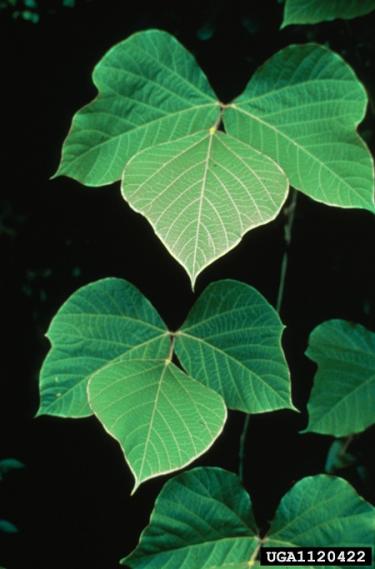When Kudzu Attacks
When kudzu was introduced to the U.S. at the Philadelphia Centennial Exposition in 1876, it was intended as a forage crop and ornamental plant. Proponents touted its potential uses and benefits, and farmers were even paid to plant kudzu on their land for erosion control. It wasn’t until the 1950s that the plant was recognized as a pest species—and by then, infestation was long underway.
Today, kudzu covers at least 2 million acres of the southeastern U.S. and it continues to spread. Kudzu vines spread through runners, rhizomes (underground stems that can send up roots and shoots), vines that root at their nodes, and seeds.
Kudzu stems are usually ½ to 4 inches in diameters, though some can grow as big as 12 inches across, and the plant’s hairy vines can grow up to 100 feet in length. Below the surface, kudzu vines develop massive taproots that can run 6 to 12 feet deep and weigh up to 400 pounds.
The vines have leaves made up of three broad leaflets up to 4 inches across, with hairy margins, and long, purple, fragrant flowers that hang in clusters. After flowering, which happens in late summer, kudzu vines produce brown, hairy, flattened seed pods that each contain 3 to 10 seeds.
Kudzu grows about a foot a day, quickly overtaking any vegetation (and even homes, vehicles and other structures) in its path. As it grows, it blocks the light, water and nutrients the plants underneath it need, and it uproots them or bends and breaks their branches with its weight. This process can profoundly alter your forest’s structure and diversity, because it both eliminates adult trees and also prevents regeneration. It can also compromise the safety of anyone who works or spends time in your woods, because it limits visibility and forest access and it can cause trees to fall in unpredictable directions.
Kudzu is growing in my woods. What do I do?
If kudzu is already infesting your forest, it’s important to act quickly. The good news is that there are several different options available to help you stop the kudzu from spreading.
How can I get more tips?
It’s simple! Enter your email below.

